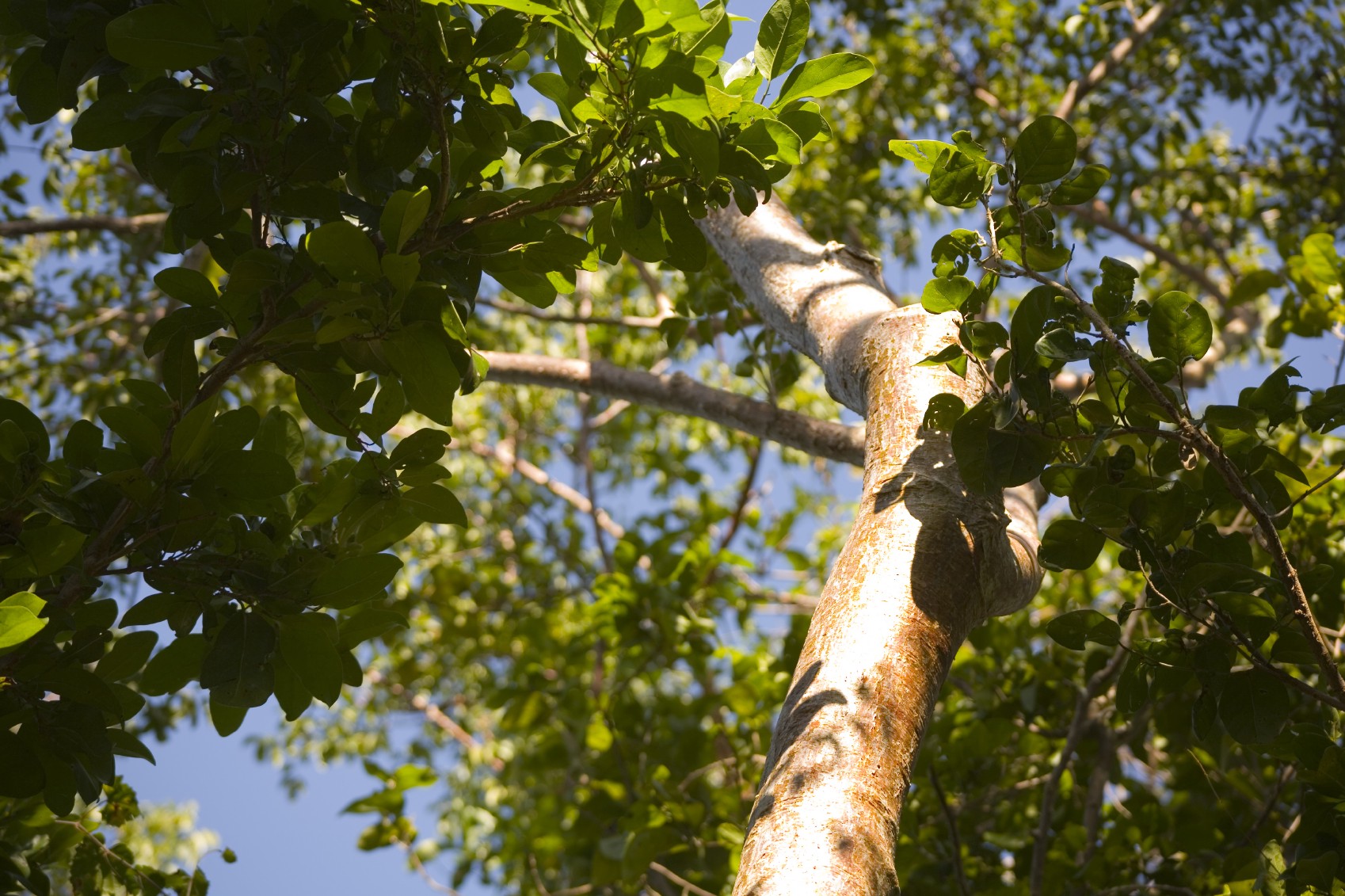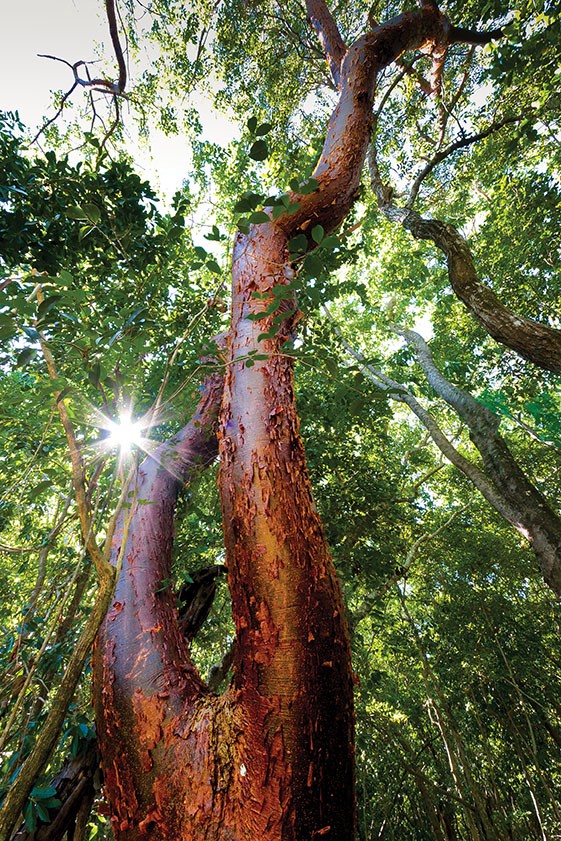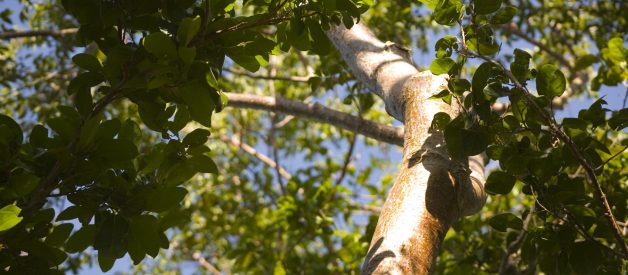By Conservancy Volunteer Bill Rhodes

Gumbo-limbo.
Really? That?s the actual name of a tree? Not Cajun-spiced crawfish soup?
It is also known as the ?tourist tree?.
With ?tourist tree?, you can understand the derivation ? Bursera simaruba has smooth, greenish bark that peels off in thin reddish patches ? like the winter tourists flocking to our warm Gulf shores, who forget to apply sunscreen ? and leave to go back with patches of red peeling skin.
No matter what you call it, the tree is fascinating, with attributes that make it unusual and attractive.
Being a transplanted Northerner, my first exposure to the gumbo-limbo was when I was being trained as a volunteer at the Conservancy of Southwest Florida in Naples ? walking on one of their nature trails, the leader was describing plants and trees along the way.
When we got to the gumbo-limbo, he stopped and gave a few facts, and then asked each of us to place our palms against the smooth trunk. It felt cool to the touch, and he told us that the gumbo limbo bark always felt cooler than other trees ? and no one knew why.
That got my attention. But more about that later.

The gumbo limbo, a member of the Burseraceae family, is in the genus Bursera. It is found from south Florida to northern South America, and Central America and the Caribbean. It has amazing features ? for example, branches just pushed into the ground will root; it grows quickly, 6 to 8 feet from a seed in just 18 months, and attains heights of 50 ft. They do not grow well in wet soil, but are salt resistant and grow well in sandy soil. Hurricane resistant, they are frequently used in landscaping projects as street-lining or specimen trees. Bearing abundant clusters of small fruit used as food by birds, the gumbo limbo is a fine addition to any landscape.
The tree contains chemicals that have been used by native peoples as medicines for conditions like gout. Scientists have even extracted chemicals from the tree that have been found to have anti-inflammatory properties in animal studies.
The wood is excellent for carving and has been the wood of choice for many years in making carousel horses.
Now, why is that bark cool? I searched for articles explaining this, but found none. Not wanting to give up, I did some hypothesizing.
I found papers on why an object might feel ?cool? when touched. The smoother a surface, the cooler it feels ? has to do with efficient heat transfer ? so, the heat moving from your pressed palm to the smooth trunk would actually make a gumbo limbo feel cool to the touch.
So, I?ve decided that the gumbo limbo has another ?magical? quality ? aside from growing 6 to 8 feet in 18 months, sprouting from branches stuck in the ground, and offering up medicines, it can also trick you into believing it is cool when, in fact, it is just as ?hot? as every other tree in the forest.
See the Gumbo Limbo for yourself ? and much more at Conservancy of Southwest Florida, 1495 Smith Preserve Way. You may even decide to become a volunteer, too! For information about the Conservancy of Southwest Florida, call 239?262?0304 or visit www.conservancy.org.


